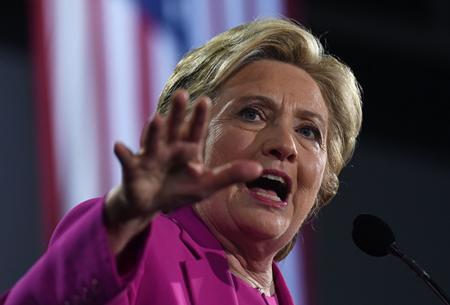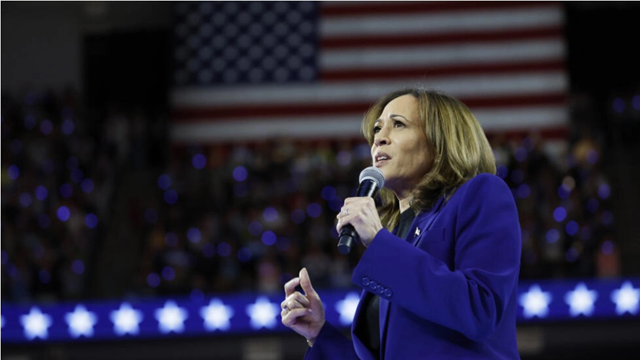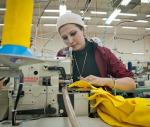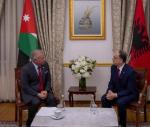You are here
Defining a new First-Lady role
By Sally Bland - Feb 14,2021 - Last updated at Feb 14,2021
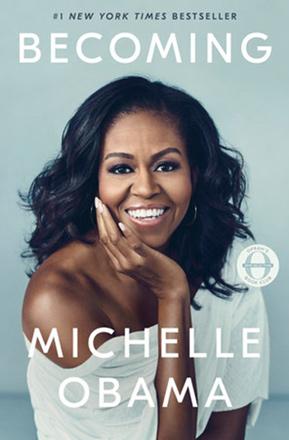
Defining a new First-Lady role
Becoming
Michelle Obama
New York: Crown Publishing/Penguin Random House, 2018
Pp. 426
In lively prose, Michelle Robinson Obama shares her formative life experiences, personal and professional, in a memoir that is obviously intended to be inspirational. Well before she met Barack Obama, much less became America’s First Lady, Michelle was an overachiever and a planner. She was never naïve about obstacles that stood in her way, but she was always determined to map out strategies to overcome them.
When Barack was elected US president, she knew that as the first African-American first lady, she would have to work extra hard to be broadly accepted: “I understood already that I’d be measured by a different yardstick... I was as vulnerable as ever to the unfounded fears and racial stereotypes that lay just beneath the surface of the public consciousness… If you don’t get out there and define yourself, you’ll be quickly and inaccurately defined by others.” (pp. 284-5)
While not losing her concern for expanding opportunities for the Black community, she launched a series of initiatives that would address the needs of American children and women at large. Most visible was the White House vegetable garden which aimed to promote healthy food, in order to curb the prevailing crisis of childhood obesity. Another programme involved mentoring and developing leadership skills in high school girls, while a third aimed to support military families, especially those of absent or war-disabled veterans.
As a result, Michelle carved out a First-Lady role for herself comparable only to that of Hillary Clinton, though she studiously avoided involvement in policymaking, not only to avoid the right-wing attacks Clinton’s work had evoked, but also due to her aversion to politics and firm adherence to her own priorities. Despite many conflicting demands on her time and energy, Michelle had early on determined that her first priority was her family and giving her daughters as normal a childhood as possible, and she doggedly stuck to that commitment.
It is worth noting that Jill Biden, wife of the then vice-president, partnered with Michelle in some of these initiatives. It is also hard not to contrast Michelle’s extensive work with the paltry record of the first lady who served in the interim between the Obama and Biden administrations!
Some may read this memoir hoping to uncover the “inside story” of the famous couple, but they will find that while there are many personal details, no “secrets” are revealed: the Obamas are portrayed pretty much as they have always presented themselves. If, however, one wants to discover the source of Michelle’s dynamic personality and drive, one need look no further than the first few chapters which describe her childhood and youth on Chicago’s South Side, generally a poorer area of the city. The Robinsons were not desperately poor, but they had to ration their expenditures carefully and save up for extras. What they were rich in was love, mutual support, a proud and close-knit extended family, and her parents’ admirable way of raising Michelle and her brother, Craig. Both parents led by example, working hard and quietly doing the right thing without any fanfare. Her father, despite suffering from MS which caused his health to deteriorate drastically over the years, never missed a day of work, while her mother returned to working outside the home to help finance her children’s education.
Most importantly, they encouraged independence and initiative by treating their children like adults at an early age and leaving them to make their own decisions: “My parents talked to us like we were adults. They didn’t lecture, but rather indulged every question we asked, no matter how juvenile. They never hurried a discussion for the sake of convenience... They also never sugarcoated what they took to be the harder truths about life.” (p. 25)
Michelle’s family background is a powerful counter-example to negative stereotypes of the Black community that have persisted over the years, conjuring up images of broken homes, welfare mothers, absent fathers, too many children, etc., while ignoring the role that the US system has played in breaking up Black families via mass incarceration and denying welfare to women and children if there was a man in the household. Michelle’s own trajectory as lawyer, public servant, wife, mother, First Lady, and advocate for women and children in particular, further reinforces this counter-example, showing that a different outlook is possible.
The manner in which Michelle was raised is also key to her many accomplishments: gaining degrees from Princeton University and Harvard Law School and landing a position at a top Chicago law firm, before deciding to seek a career in public service, a decision which she attributes largely to Barack’s influence. This led her into significant positions in Chicago’s City Hall, the University of Chicago and its Medical Centre, as well as the non-profit, Public Allies. Her upbringing also prepared her for all the hard work and adjustments required as she campaigned vigorously for Barack’s election to the Illinois Senate, the US Senate, and the presidency. In all this, she never lost her own identity, but rather expanded it, though she frankly shares the anxieties and self-doubt she felt when confronted with an unfriendly press corps, the growing influence of the Internet and social media, where outright lies could spread as easily as the truth, and attacks by right-wing politicians who targeted her as a surrogate for her husband.
Related Articles
WASHINGTON — Hillary Clinton has one of the strongest resumes of anyone ever to run for US president, with stints as first lady, senat
DOHA — Michelle Obama arrived on Monday in Qatar on the opening stage of her first solo Middle East tour, where she is expected to call for
CHICAGO — Kamala Harris was scheduled to give the most important speech of her political life on Thursday as she accepts the Democratic pres


